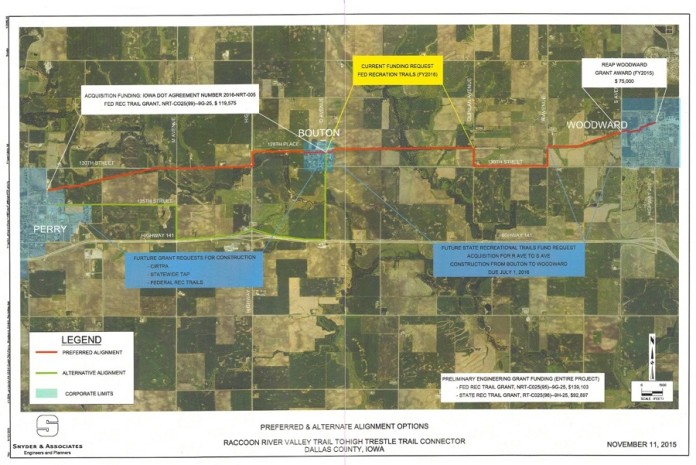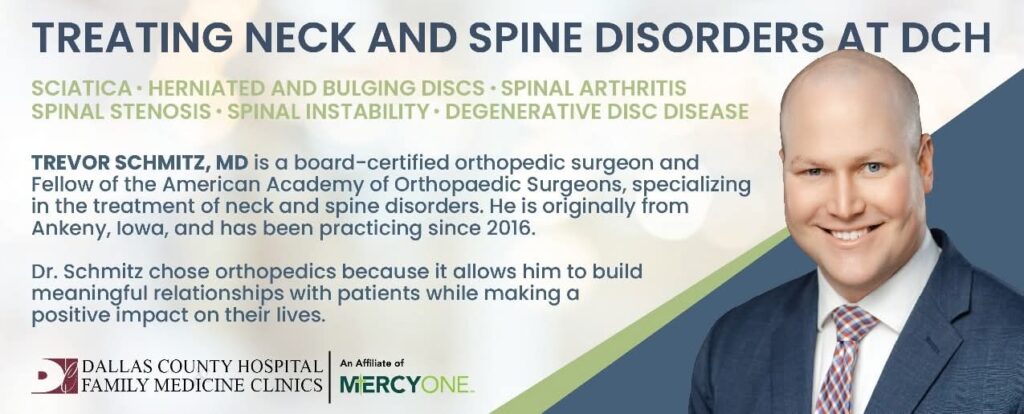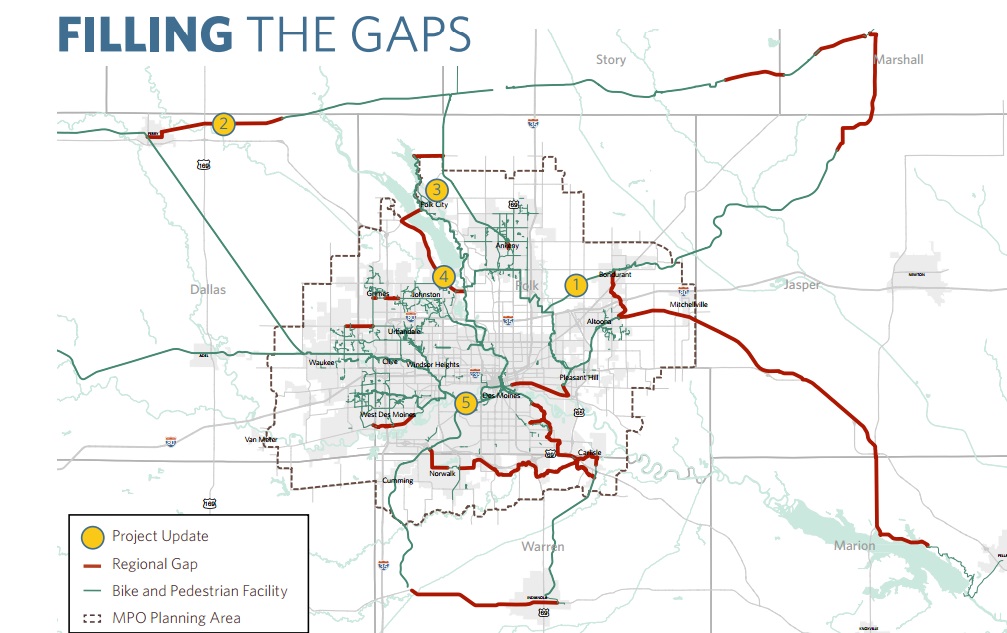
A tipping point might be near in the effort to find a route for a connector trail between Perry and Woodward, and what tips the scale might well be federal funding.
The Dallas County Conservation Department is leading the connector-trail project. They will discuss recent developments and proposals for the project at a public meeting Jan. 12 at 7 p.m. at the Woodward City Hall, 105 E. Second St. in Woodward.
In answering questions about their October application for grant funding from the Iowa Department of Transportation (DOT), the connector-trail team got a hint that the DOT wants them to fix on a definite route.
“Their questions kind of led us to think that having a fairly unsolved or not fully determined route was really hurting us in the eyes of the funding committee, that they really want to see a plan move forward,” said Richard M. Voelker, lead architect on the link-trail project with Ankeny-based Snyder and Associates.
In its most recent grant application, the conservation department asked for $171,000 in federal recreational trails funds in order to buy right-of-ways and build a section of the connector trail between Bouton and Quinlan Avenue. The request represents 80 percent of the total cost of the four-mile stretch, estimated at $213,000.

“It seemed clear that they wanted more information,” Voelker said of DOT questions at the meeting. “You know, ‘What’s your plan? Where’s your funding going?’ They didn’t get why we’re asking for funding for Bouton to Quinlan. It doesn’t make any sense. It’s in the middle of the route. Any time they ask questions like that, you’re funding’s kind of on the line because they have their doubts, and they have other trail projects that are ready to go, ready to be funded, and those come to the forefront.”
Voelker shared his impressions with the Dallas County Conservation Board at its Dec. 8 meeting, the same date when the DOT staff made its funding recommendations to the DOT Commission.
“It looks like we gave them the right answer,” Voelker said, telling the board the Perry-to-Woodward connector-trail project was among those recommended for funding. The DOT Commission is expected to make the grant approval official in January, with the money becoming available October 2016.
“So far, so good,” Voelker said. He said recent signs of property owners’ “willingness to work with us in the future” has also allowed “us to zero in a little further on a potential route.”
Settling on a route might make grants easier to land and some property owners more willing to participate, he said.
“The grant allows you to actually have the substantive conversations” with property owners, Voeker said. “So we’re really caught in a bit of a Catch-22, where they don’t see resolution on our route, therefore they don’t fund us, therefore we don’t have any money to conduct substantive conversations to secure the route.”
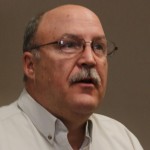
The difficulties of acquiring right-of-way property from landowners have not disappeared. Dallas County Conservation Board Executive Director Mike Wallace repeatedly told the board at its December meeting, “We don’t have anything finalized yet,” but a provisional route could help smooth the way.
“By having a line on a map that we’re heading towards as our prime objective,” Voelker said “then there may be points where further discussions with property owners may allow some movement. Maybe they’ll see that it’s really happening, and they might consider giving us even a five- or 10-foot easement, which would help give us a little more room.”
Wallace encouraged the board to prepare to make a decision.
“Not today but I think in January or February we should probably just force ourselves to decide a route because we’re approaching the next major grant, which will be the State Recreational Trail grant in July, and that’s where we can actually get some big bucks,” Wallace said. “But before they start giving us construction dollars, we need to have a route decided.”
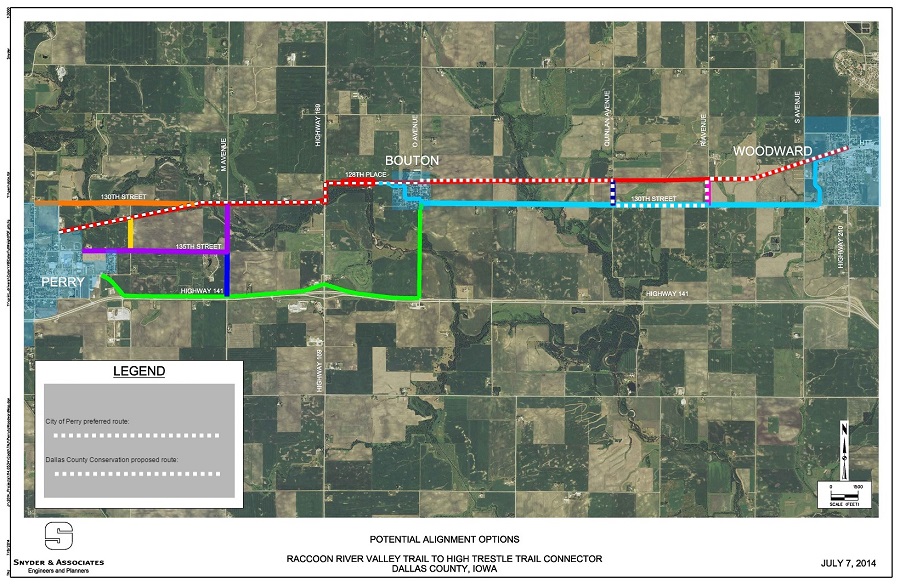
Significant challenges remain in building a trail along the so-called red route — 130th Street between Perry and U.S. Highway 169 and along 128th Place between U.S. Highway 169 and Bouton.
“Of course, the red route, if we don’t have any luck with property owners, that requires us to be in the county road right of way proper,” Voelker said. “There’s not a lot of room. Those right of ways are fairly narrow. There’s not a lot of room on the back slope of the ditch to put a trail or cover up the ditch or anything like that.”
He reviewed for the board members some of the options he outlined at the May 18 public hearing on the question, discussing the possibility of building a “protected cycle track” along portions of the red route. Such a design would be “essentially like a division and raised median, a concrete median, and then a trail adjacent to that at the same elevation, also paved, and then in theory we were talking about a gravel road adjacent to that, along with all the bad things with a gravel road, the gravel rocks and dust and all that,” he said.
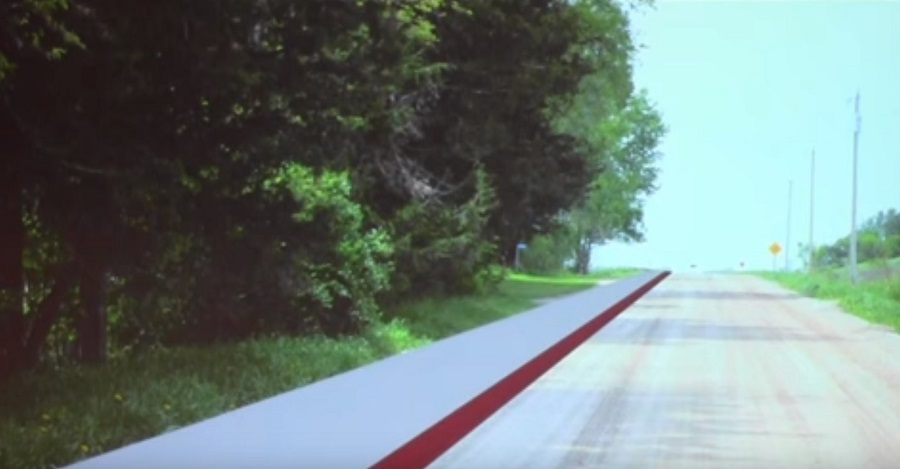
Voelker said Dallas County Engineer Al Miller did not like the idea of building a recreational trail alongside a gravel road.
“The county engineer was definitely not in favor of that situation from a road-maintenance standpoint or just in general,” Voelker said. “He really did not like that option. Of course, the mitigating thing to take care of most of the issues with that is to pave the road. That’s something I think he was willing to consider. (Former Dallas County Engineer) Jim George certainly was.”
The idea of paving 130th Street has support beyond the Dallas County Conservation Board. Perry Mayor Jay Pattee led a delegation from Perry to a November meeting of the Dallas County Board of Supervisors in order to pitch the idea of paving Park Street.
Pattee said a paved road connecting U.S. Highway 169 to Perry’s northeast side could spur housing development there and general economic development in Perry, a prospect desired by developers and city leaders alike.
A conservation board member asked whether it would be helpful to meet with representatives from Perry prior to the board’s Jan. 12 public hearing in Woodward. Wallace said there seems to be nearer agreement now between the conservation board and interested parties in Perry than there was at the May public hearing at Forest Park Museum in Perry.
“I’ve talked with the mayor,” Wallace said, “and with several other people and said, ‘Hey, you know, you’ve had all summer long to work on things. What have you found out?’ and they found out exactly what we found out. I guess nobody had the magic answer or the perfect solution to this. So I would think they would agree to what we have here. We still want to do the red route, but because of landowners not wanting to do things, we might have to do something different.”



